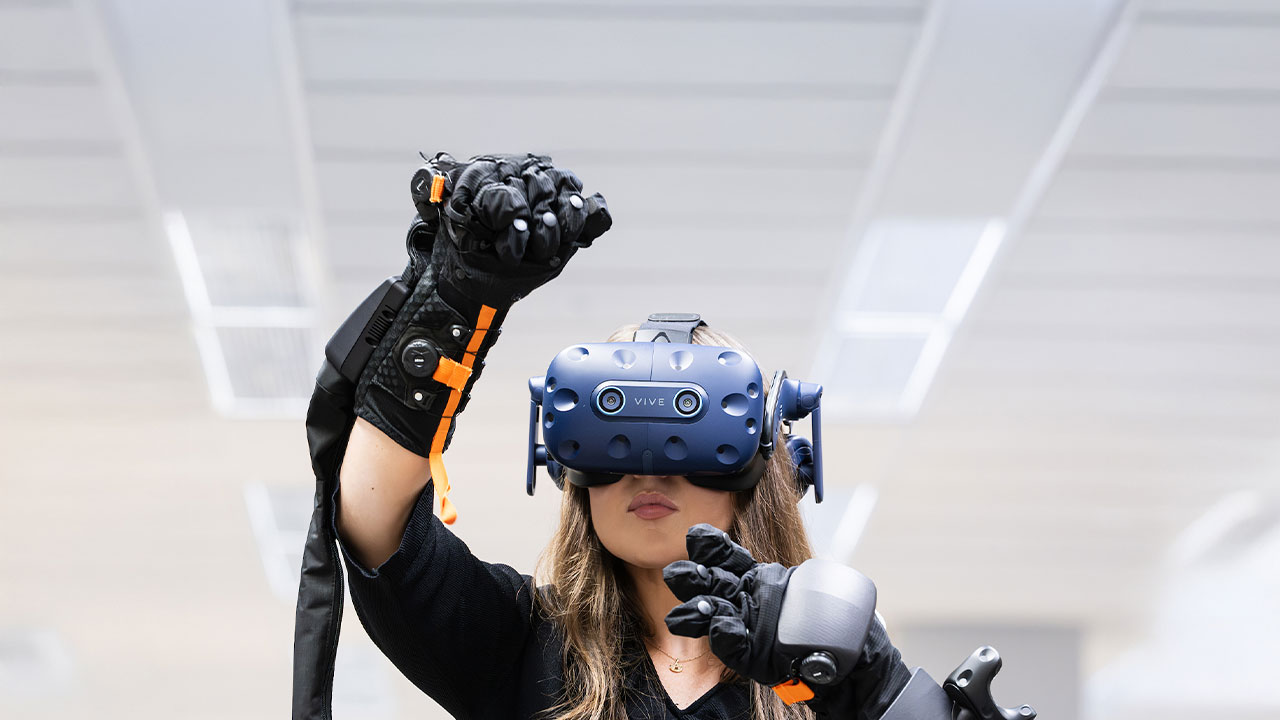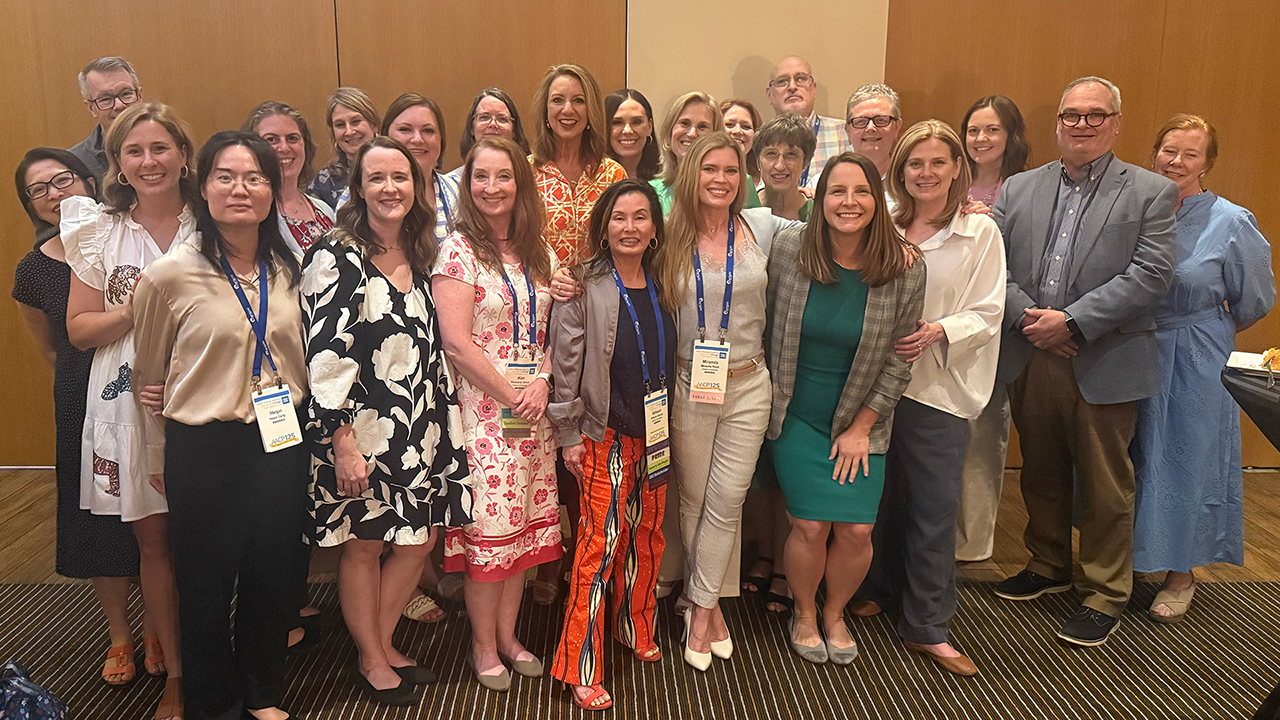content body
Kim Garza is using virtual reality to transform how people learn, whether they’re patients facing a new diagnosis or students preparing for a career in pharmacy.
The associate professor in Auburn University’s Harrison College of Pharmacy is leading two parallel efforts with the technology to help patients newly diagnosed with rheumatoid arthritis (RA) better understand their condition and to teach pharmacy students the value of empathy in patient care.
This idea emerged from Garza’s collaboration with Birmingham, Alabama-based rheumatologist Jeffrey Curtis, who wanted to help his patients better understand the long-term impact of their disease.
“Brochures and verbal explanations weren’t enough,” Garza said. “We wanted patients to feel what it’s like to live with RA — to experience the stiffness, the immobility, the frustration.”
If they feel it, they can have a better understanding of the condition and make more informed treatment decisions, she said.
Garza also saw a way to cultivate an essential skill in her students.
“Research shows a link between provider empathy and better health outcomes,” she said. “Our curriculum emphasizes a patient-centered approach, and empathy is a critical part of that.”
With two purposes in mind, the pair began developing simulations using virtual reality (VR) and haptic gloves — wearable devices that let users feel and interact with virtual objects — that would allow patients and Garza’s first-year pharmacy students to experience the physical limitations caused by chronic diseases.
How it started
As the Draughon Library was getting its Innovation and Research Commons, featuring a VR space, Garza approached the library’s Gary Hawkins with an idea: create a VR experience using haptic gloves to mimic disease progression for patients.
“They would attempt to perform everyday tasks that people with advanced RA often struggle with,” she said. “The gloves would provide force to simulate joint stiffness and immobility, making those tasks challenging. Patients would also see [in VR] the characteristic joint deformities associated with RA.”
To adapt the concept for students, Garza and Hawkins partnered with Chad Rose and Cheryl Seals in the Samuel Ginn College of Engineering and secured a two-year AUX: Immersive Learning Experiences Grant from the Office of Information Technology and the Biggio Center for the Enhancement of Teaching and Learning.
When unforeseen circumstances prevented the acquisition of haptic gloves, the team instead simulated color blindness in VR and used stiff gloves to imitate arthritis.
In Garza’s required course on navigating the U.S. health care system, first-year students wore gloves made of firm plastic and Velcro straps that restricted movement, replicating joint stiffness.
The impact was immediate and profound.
“Students consistently tell us how eye-opening it is,” Garza said. “They walk away with a deeper understanding of what their patients go through.”
One student stated, “… it really allowed you to think and put yourself in their shoes.”
Garza has collected data showing that the exercises are increasing empathy in her students.
Mission accomplished, but there is more to do.
In 2023, the team received additional funding from AUX and the American Association of Colleges of Pharmacy (AACP) and purchased haptic gloves from HaptX. The Seattle-based company says its products simulate the sensation of touch and are widely used in workforce training.
Where it’s going
Garza cited one VR scenario where she felt the weight and movement of a fish; in another, the torque of a screwdriver.
Experiencing it herself, Garza understood the gloves’ potential for training in repetitive, tactile tasks. But that’s not exactly helpful for pharmacy students and patients.
She said the team is exploring its options “to fit our needs.” Hawkins, library colleague Lily McGuckin and graduate assistant Nnamdi Ikenna-Obi are currently developing a scenario that Garza will test soon with RA patients. Rose, Curtis and mechanical engineering graduate student Paxton Albright are also collaborators, offering clinical insight with technical expertise in haptic hardware.
Recognizing the growth of advanced technologies on campus, Garza helped launch the Extended Reality Faculty Learning Community last fall. Currently, more than 60 members from every college meet bimonthly to exchange ideas and share experiences.
Beyond campus, Garza’s efforts in this field have garnered attention. At the AACP annual meeting, she received an innovation award from the Technology in Pharmacy Education and Practice Special Interest Group and a best paper award from the Social and Administrative Pharmacy Section for a study published in the “American Journal of Pharmaceutical Education.”
“Being awarded these honors back-to-back was so energizing and affirming,” she said. “I hope it will increase national recognition of the innovation of our curriculum at Auburn.”
What’s next
Garza envisions a full library of disease-state simulations that students can explore independently. But scaling the program will require more resources and adjustments to the user interface.
“We want to make this sustainable and accessible,” she said. “Incorporating innovative technology, like VR and haptics, into the student experience aligns perfectly with Auburn’s strategic plan.
“In this age of lightning-fast growth in technology, we have to stay relevant, and this is one way to accomplish that.”












